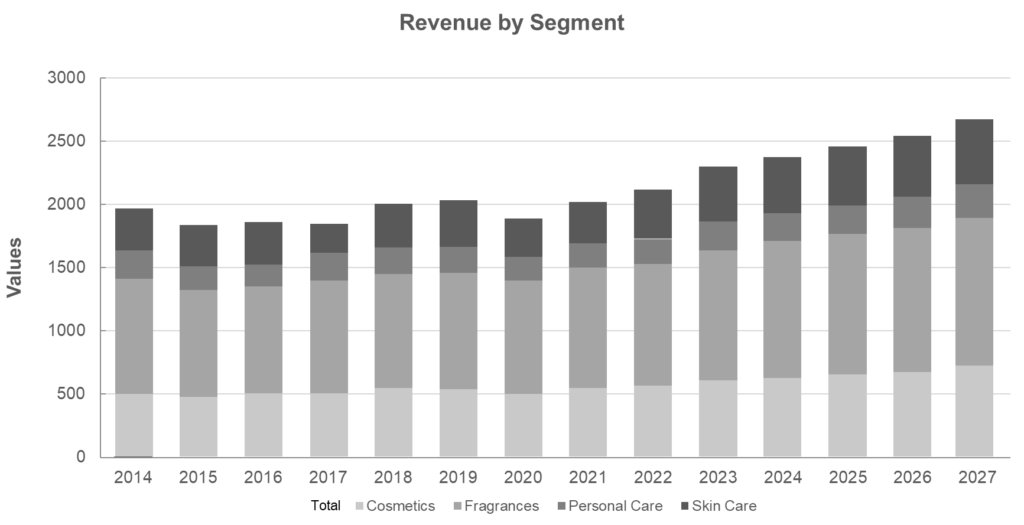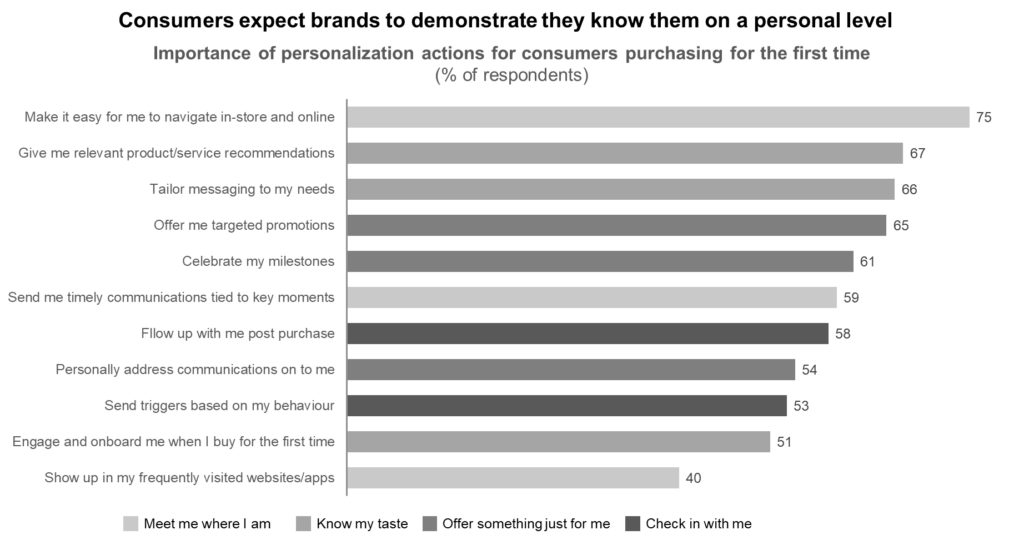For Millennials, Gen X, and Gen Z, appearance is paramount for their self-esteem. The verb ‘self-care’ never reached its full meaning until recently, when shoppers moved from using generic cosmetic products to demanding customized self-care and premium cosmetic products from FMCG brands. A few emerging and forward-thinking FMCG and consumer packaged goods (CGP) companies offer products that enhance consumers’ health by catering to their unique needs, such as hyperpigmentation and hypopigmentation. Skin is the single biggest noticeable organ of our bodies, and taking care of the epidermis is just a simple self-care way of well maintaining oneself, except that there are many challenges to this quest. The write-up enlists hyperpigmented skincare challenges and solutions.
Hyperpigmented Skincare: FMCG- Numbers
Noticeably the FMCG industry has been unable to keep a fast-moving pace with the exigencies of the hyper-pigmented population and their everyday skin-care needs. The global FMCG market is projected to reach $18,939.4 billion by 2031, registering a CAGR of 5.1% from 2022 to 2031. Revenue in the Beauty & Personal Care market (BPC) amounts to US$ 571.10 billion in 2023, with the market to grow annually by 3.80% (CAGR 2023-2027).
The global hyperpigmentation treatment market is expected to be valued at US$ 4.78 billion in 2023 and is projected to exhibit a compound annual growth rate (CAGR) of 9.5% from 2023 to 2033. For decades, the Fortune 500 beauty & personal care industry has been focused on high demand and broad products, leaving the special needs population to medical in-patient and outpatient treatments. A quick Google search around beauty products for hyper-pigmented women and men will leave one with zilch unless one looks deep on the net.

Figure 1: Revenue by segment in hyperpigmented skincare
Understanding Hyperpigmented Skincare Types
Different kinds of hyperpigmentation are most commonly recognizable with darker skin patches due to increased melanin production. One is melasma, which causes brown to gray-brown patches due to hormonal changes in the cheeks, chin, nose bridge, and forehead. Also, it affects more women than men. Genetics often cause freckles or ephelides, and sun exposure leads to the development of small red or brown spots on the skin, such as the face, neck, back, hands, arms, and upper chest. UV sun exposure causes the appearance of the third kind of solar lentigines or liver spots, which have clearly defined pigmented edges and can manifest anywhere on the body.
Post-inflammatory hyperpigmentation is a type of skin condition that occurs in response to injury, burns, friction, or pain. It can also develop as a result of aggressive clinical skin treatments such as chemical peels, light-emitting treatments, and dermabrasion. Unless the underlying causes of hyperpigmentation get deciphered, any hyperpigmentation treatment regime can’t fully cure the condition.
Unexplored Physiology of Hyperpigmented Skin
The blurring lines and convergence of self-care and healthcare are significantly impacting working people due to the extensive range of offerings in this segment. FMCG research and investment have largely ignored the dark-skinned population. This is despite the creation of brightening products, face & body wash merchandise, and nourishing creams for oily and dry skin. The lack of rightful space in supermarket aisles further exacerbates the issue.
Hyperpigmented Skin: OTC & Beauty Care Products
The Global online pharmacy market size reached USD 68 billion in 2021, thanks to the expansion of E-commerce. The projected annual revenue is expected to reach USD 206 billion by 2028, exhibiting a compound annual growth rate (CAGR) of 16.8%. Total online and offline revenue in the OTC Pharmaceuticals market is US$145.30 billion in 2023. Skin hyperpigmentation consumers are looking at online pharmacies to find specific skin treatment products that help them manage their skin conditions better.
Hyperpigmented patients sometimes find themselves in a quandary when looking for quality online skin-care products. Moreover, consumers can ensure the quality of skin-treatment products by being weary of online pharmacies that give unimaginable discounts, deliver personal-care products that don’t have expiration dates, and e-pharmacies that are not licensed in their state.
Challenges in Hyperpigmentation Product Offerings
The consumer’s first disposition remains to demand better products. With increased access to resources, they are seeking high-end and result-driven personal care products. The skin acts as the protective layer against all external pathogens. The epidermis specifically shields the deeper layer, the dermis, from UV and UB rays. Established beauty and skincare brands have not met the current needs of hyperpigmentation people. In the case of hyperpigmented products, there is often less exploration and consideration given to skins with high melanin content. Double-edged chemicals may also be utilized without sufficient research in the hyperpigmented product segment.
The cosmetics industry offers hundreds of shades for normal/fair-skinned individuals. However, a wide range of shades is significantly less available for dark-skinned individuals. This can be attributed to companies’ insufficient or limited production.
Current advertising predominantly centers on fair-skinned individuals, and brands have been less inclusive towards the hyperpigmented population.
People with hyperpigmentation often avoid sunscreen despite it being another staple in their skincare regimen. It is because they have more melanin in their skin. However, the high amount of melanin blocks UV-B rays and also leads to Vitamin D deficiency among them. Sunscreens with mineral pigments can leave a skin-dulling cast over time. The presence of zinc oxide or titanium dioxide in the sunscreen formulation causes this effect. This can attract more dust and moisture, making them less effective for individuals with hyperpigmented skin.
New Skincare Solutions for Hyperpigmented Populace
Emerging FMCG companies are beginning to solve many of the above cosmetics and beauty treatment willies. They are starting with focusing on the part of the hyperpigmentation market and ingredients research, such as niacinamide, glutathione, kojic acid, tranexamic acid, mandelic acid, heparan sulfate, high-purity hyaluronic acids, AHAs, ceramides, D-panthenol and vitamin C rich serums that narrow high-level secretion of melanin in the skin. Tinted sunscreens effectively work for dark skin by providing a tint that matches the skin tone. They can also serve as natural makeup primers.
Entrepreneurs who understand the ethos of the segment and believe in all-inclusive products are finally creating cosmetics for dark-skinned individuals. ColoredRaine, with its high-pigmented eyeshadows and long-lasting lip formulas, offers edgy, diverse, and ultimate-performance cosmetic products. AJ Crimson beauty products comply with reasonable manufacturing procedures (GMP). They offer universal finishing powders and dual skin crème foundation. Moreover, they provide customized client services like Match Me Perfect and Crimson Elite membership. Triple O Polish and Mented products are created so that dark-skinned people don’t have to think twice before selecting bold and unique shades. Also, their website imagery truly lives to this theme. Avon Products, Inc. had launched the ANEW hydra pro-vita-d that activates vitamin D in surface skin cells.
With hyperpigmentation affecting nearly 5 million people in the US and more globally, consumers are adamant about finding the right products. It’s based on their skin requirements. Brands are also using AI technology to assist consumers in finding the right product. Moreover, they are using augmented reality and virtual reality (AR/VR) to help them ease their purchase choices. A McKinsey & Company study reveals that 71% of consumers expect companies to deliver personalized interactions. Also, 76% get frustrated when that doesn’t happen.

Figure 2: Worldwide revenue by beauty and personal care segment
Conclusion
Self-care and self-compassion mean the same thing. Prioritizing oneself starts with bringing attention to needs with carefully selected beauty products. Moreover, personalized cosmetics that befit one’s skin tone. Consumers are shifting their buying habits to premium range, natural, vegan, and cruelty-free personal care products.
Currently, only a few companies are creating metier beauty products. However, more entrepreneurs and big enterprises will enter the hyperpigmentation segment in the offing. It is important for consumers today to genuinely connect with the brands’ ethos and key marketing messages. Self-care businesses are increasingly fine-tuning their offerings with embedding technologies. That includes artificial intelligence, AR, VR, social engagement, strong R&D, subscription boxes, and personalized offers to charm consumers quite literally.
`